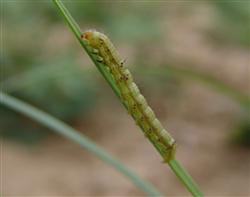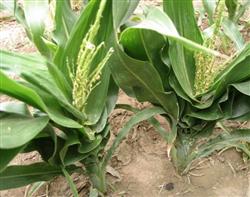Peanut planting technology: how to increase peanut yield?

How to increase peanut production? Do you share technical experience with netizens? The planting network has sorted out the methods to increase the yield of peanuts, which are listed below for netizens' reference. Method 1. Pay attention to rotation: continuous cropping peanuts are generally characterized by small trees, yellow leaves, early defoliation, many diseases and insect pests, and few fruits. Planting peanuts on continuous cropping land, even with the application of fertilizer, it is difficult to achieve the expected yield. Method 2. Deep ploughing: peanuts are deep-rooted crops. Generally, deep ploughing (26-33 cm) can increase yield by 20% compared with shallow ploughing (10-13 cm). There are two kinds of peanuts planted in summer: interplanting and sowing after stubble. The former should carry out deep ploughing and fertilization before sowing, and at the same time strengthen the mid-ploughing of the previous crops in the later stage. The latter should kill the stubble in time after the previous crop harvest, and pay close attention to fertilization, ploughing and raking, and sowing. Method 3. Skillfully apply / fully apply fertilizer: base fertilizer accounts for more than 80% of the total fertilizer, and the type of fertilizer should be mainly organic fertilizer. Generally, per mu, 2000 kilograms of rotten high-quality human and animal manure, 15 kilograms of diammonium phosphate or 40 kilograms of calcium superphosphate, 5 kilograms of potassium chloride and 4 kilograms of urea are applied per mu. Phosphate fertilizer is best mixed with organic fertilizer at the ratio of 0.5% to 1%. In addition, seed dressing with rhizobium agent (3 ml per kilogram of seeds) can increase effective rhizobium and improve nitrogen fixation; seed dressing or soaking with 0.2%-0.3% ammonium molybdate or 0.01%-0.1% boric acid solution can supplement the trace elements needed for peanuts; calcium-deficient soil generally uses lime 50 kg per mu, combined with cultivated land as base fertilizer. Method 4. Make seed treatment before sowing: peanut drying before sowing: drying the seed before sowing can make the seed dry and promote post-ripening, so as to improve the vitality of the seed and make the seed germinate quickly and sprout evenly. Especially for the seeds with poor maturity and damp during storage, the effect of fruit drying is more obvious. Drying fruit is generally carried out 15 days before sowing, choose sunny day at noon for 4-5 hours, continuous 3-4 days. But be careful not to sun the seeds directly, lest the seed coat become brittle and burst, sunburn the seeds or "return to oil", and reduce the germination rate of the seeds. Shelling of peanut seeds: the closer the shelling time to the sowing time, the better. Because the shelled seed loses the protection of the pod shell and comes into direct contact with the water and oxygen in the air, its respiration and enzyme activity are exuberant, and the nutrients in the seed are easily consumed. Graded grain selection of peanut species: the nutrition needed before and after emergence of peanuts is mainly supplied by two cotyledons, so large and full peanuts should be selected as seeds. Combined with shelling, the seeds can be graded according to size, skin color and plumpness. Method 5. Skillfully sowing: while sowing at the right time, grasp the appropriate sowing depth and the methods of soil covering and suppression after sowing according to the soil quality, climate and soil moisture. The sowing depth is generally about 5 cm. If the soil quality is sticky and the soil moisture is good, it can be sown shallowly, otherwise, it should be sown deeply. Note that the shallow sowing should not be less than 3.3cm, and the deep sowing should not be deeper than 6.6cm. If the soil moisture is slightly worse or the soil is too sandy when sowing, it is necessary to take the soil to step on the seed and suppress it in time after covering the soil. If the soil moisture is good and the soil is sticky, you can not step on the seed when sowing, wait for the topsoil to dry slightly after covering the soil, and then determine whether to suppress it as appropriate, so as not to harden the topsoil and affect the emergence of seedlings. In case of poor soil moisture, drought-resistant sowing should be carried out in time. In order to control underground pests, poison bait should be used during sowing to preserve the seedlings, and seed coating agent can also be used before sowing. The requirement of reasonable close planting of peanuts is "fertile land does not pour seedlings, thin land can be closed" (in order to seal behavior in the fruiting period). The planting density of interplanting peanut and wheat stubble peanut in wheat field (Weibo) was slightly higher than that of spring sowing peanut of the same variety. Click to get more peanut planting techniques click to get more food crop planting techniques
- Prev

Peanut planting techniques: what are the diseases and insect pests of peanuts?
What are the diseases and insect pests of peanuts? How to prevent and cure? Also ask netizens to help introduce the main diseases and insect pests of peanuts are leaf spot, cotton bollworm and red spider, and the harm and control methods of farming web, which are listed below for netizens' reference. First, the harm of peanut leaf spot: peanut leaf spot is mainly brown spot.
- Next

How to prevent and cure corn rough shrinkage disease?
How to prevent and cure corn rough shrinkage disease? Also asked netizens to help introduce the method of corn rough dwarf disease is a virus disease transmitted by gray planthopper, farming network sorted out the prevention and control methods of corn rough dwarf disease, listed below for netizens' reference. Prevention and control methods of maize rough dwarf disease: first, select resistant and disease-tolerant corn.
Related
- The first cup of black tea in spring, the flavor and history of tea gardens in Kenya, Africa
- The computer can not only choose potatoes, but also grow tea rice. AI will grow winter oolong tea champion.
- It is not only the inflated tea bitten by insects, but also engraved with the four seasons tea in Beipu.
- The Oriental Beauty Tea Festival in Zhuxian County takes the stage at the weekend to experience the plus-size feast of oil tea.
- & quot; Oriental Beauty Tea & Exploration of Emei in Hsinchu, the hometown of quot;
- The new variety of strawberry "Tainong 1" dessert is the first choice with mellow aroma. Crimson gorgeous
- History of Tea in Taiwan: from Wild Inner Mountain to Export Tea Garden
- Two types of Taiwan Oriental Beauty Black Tea won the British three-Star Award for Childhood Tea Xiang Zhang Jiaqi changed from pilot to champion tea maker.
- Banana species and varieties: the planting history of Taiwan Xianren banana and dwarf banana is long, is banana disease resistant?
- Coffee planting Technology: Qianjie Coffee from Seedling to harvesting

